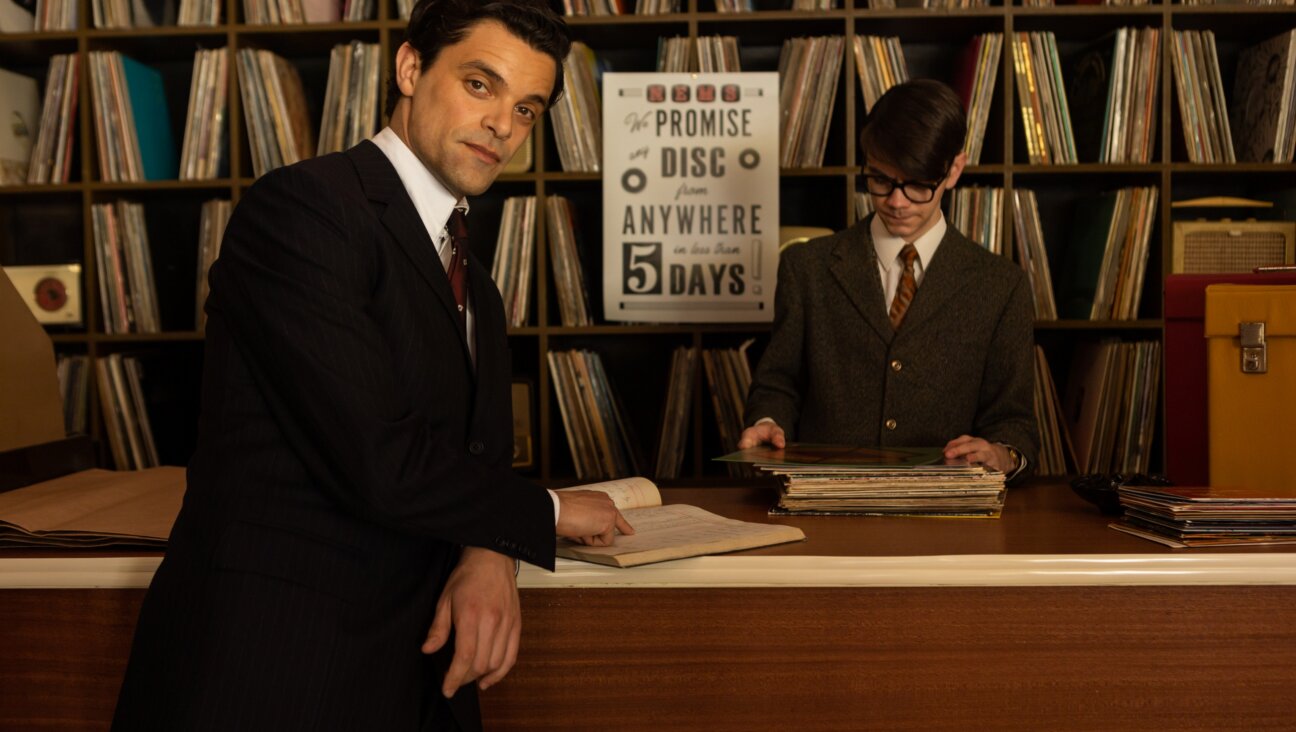Doctor Writes ‘Epic Saga’ Of Jews in Medicine
As Frank Heynick was nearing the completion of his gigantic tome, “Jews and Medicine: An Epic Saga,” he came across the name of an important doctor, George Sternberg, whom he had neglected to mention.
The discovery of Sternberg did not make Heynick happy.
“I got through a lot of trimming to keep it at 600 pages,” Heynick said. The idea of researching yet another life, adding more to the manuscript, and trimming other parts was heartbreaking. But Heynick just sighed and faxed a colleague of his to make sure that Sternberg was Jewish.
When a response came — that Sternberg was not, in fact, Jewish — Heynick was ecstatic: “I said, ‘Thank heavens!’”
“Jews and Medicine” (Ktav Publishing) examines one of the largest and perhaps greatest of Jewish endeavors: the Jewish contribution to medicine — from its origins in ancient Israel up until 1950.
“Five hundred years ago, 50% of the doctors in Europe were Jews,” Heynick said at a recent reading of “Jews and Medicine,” at a Brooklyn Barnes & Noble. At the time, Jews made up less than 1% of the total population of Europe. But from the lowest rung of society to the court physicians, Jews were deeply embedded in the medical profession. Medicine was a profession that the Jew — wandering from land to land — could take with him. “Fast forward 500 years: 36 Nobel Prize winners in medicine were Jews — and [the Jews] are not even approaching 1% of the world population,” Heynick said.
When Heynick opened up the floor to questions, a young man asked him how the Jews could survive as doctors when they were commonly accused of poisoning wells and being in league with Satan. “Why that degree of trust?” the young man inquired.
“Yes,” Heynick said, the common view was that “Jewish physicians poison their patients. But only one in 10. That was an interpretation.” According to the medieval logic, Jews would not be able to survive if they poisoned every single one of their patients, so they poisoned only a minority. Many Christian physicians, on the other hand, were still practicing a brand of medicine closer to witchcraft than science, so visiting a Jewish doctor “was a risk worth taking,” Heynick said.
These are the kinds of historical tidbits one will find in “Jews and Medicine.” The book goes through thousands of years of history and chronicles discoveries made by hundreds of Jewish doctors. In ancient Israel, Jews were pioneers of public health with their pronouncements on cleanliness, which are found in abundance in the Torah. Mar Samuel, a second-century Babylonian Jew, contributed to the dietary and veterinary laws of the Talmud. Heynick discusses the great Persian physicians, Turkish physicians — even Chinese Jewish physicians such as Xiansheng, or An Cheng, the court physician to the early 15th-century Chinese emperor, Cheng Zu, who was instrumental to the rebuilding of the synagogue in Kaifeng.
Heynick, 56, is of medium height, with a slim build and brown eyes, and wears a silver Batman ring. “My apartment is a Batman museum,” Heynick explained over a piece of cheesecake at Junior’s Restaurant in Brooklyn. After he finished dessert, he walked over to the Brooklyn Hospital Center and showed a reporter the product of another of his hobbies: an elaborate model of typical Swiss, Dutch and German cities melded together that he had spent 10 years working on when he lived in the Netherlands and subsequently donated to the hospital.
Heynick grew up in Brooklyn, N.Y. His father was a tailor and his mother was a secretary. He attended Hunter College and later Columbia University, where he earned two master’s degrees in linguistics. He received his doctorate in medicine from the University of Groningen in the Netherlands, where he wrote his thesis on his favorite Jewish doctor, Sigmund Freud. Heynick would spend the next 20 years in the Netherlands, eventually becoming a columnist for Tandarts Praktijk, a Dutch dental magazine.
Heynick had always been interested in the history of medicine — and the disproportionate representation of Jews in that profession. “Jewish people should be perceived as doctors,” Heynick said. “You look at the great Jewish scientists — they’ve developed only in the last 100 years. Jewish medicine goes back 1,000 years.”
Despite the massive scope of the Jewish contribution to medicine, the history of Jews as doctors is something that has been largely ignored. In his research, Heynick had not found any book that had come out on the topic in the last 50 years.
Moreover, Jewish studies departments at universities have, by and large, chosen to ignore the history of Jews in medicine.
“By far, the most frustrating thing” has been the reception the book has received from academics in Jewish studies departments, Heynick said. “I personally sent a copy to the chairperson of every department of Jewish studies in the New York metro area.” But with the exception of the chair at Queens College, he said, none expressed any interest in incorporating Jewish medical history into their curriculum — or even phoned Heynick to acknowledge that they received the book.
“You ask an educated Jew [to name great Jewish doctors] they’ll say [Moses] Maimonides and [Jonas] Salk,” Heynick said. Few who are educated in Jewish history are likely to know about, say, Selman Waksman, who discovered the antibiotic streptomycin — a cure for perhaps the deadliest disease in history, the plague, or Rosalind Franklin, who developed X-ray diffraction photographs of DNA, and who probably should have shared a Nobel Prize with James Watson and Francis Crick for their DNA model, Heynick said.
Franklin is one of the last names mentioned in “Jews and Medicine,” and she comes almost as an after-thought in the epilogue. Heynick stopped the narrative in 1950, at the end of what he terms, “the heroic age of medicine.” Before 1950 doctors like Waksman were working on minuscule budgets and fighting diseases that threatened to wipe out entire populations. “I’m paraphrasing Churchill: Never have so many owed so much to so few,” Heynick said. Today, he said, doctors generally work with larger budgets to fight far less deadly and widespread diseases.
There are, of course, two deadly global diseases that no one has cured: AIDS and cancer. In 1998 The New York Times reported on what appeared at the time and may yet turn out to be a revolutionary breakthrough in the search for a cure for cancer. The man at the forefront of that research was Dr. Judah Folkman — just another Jewish doctor.
Heynick might have to add another chapter, soon enough.
A message from our Publisher & CEO Rachel Fishman Feddersen

I hope you appreciated this article. Before you go, I’d like to ask you to please support the Forward’s award-winning, nonprofit journalism so that we can be prepared for whatever news 2025 brings.
At a time when other newsrooms are closing or cutting back, the Forward has removed its paywall and invested additional resources to report on the ground from Israel and around the U.S. on the impact of the war, rising antisemitism and polarized discourse.
Readers like you make it all possible. Support our work by becoming a Forward Member and connect with our journalism and your community.
— Rachel Fishman Feddersen, Publisher and CEO






















